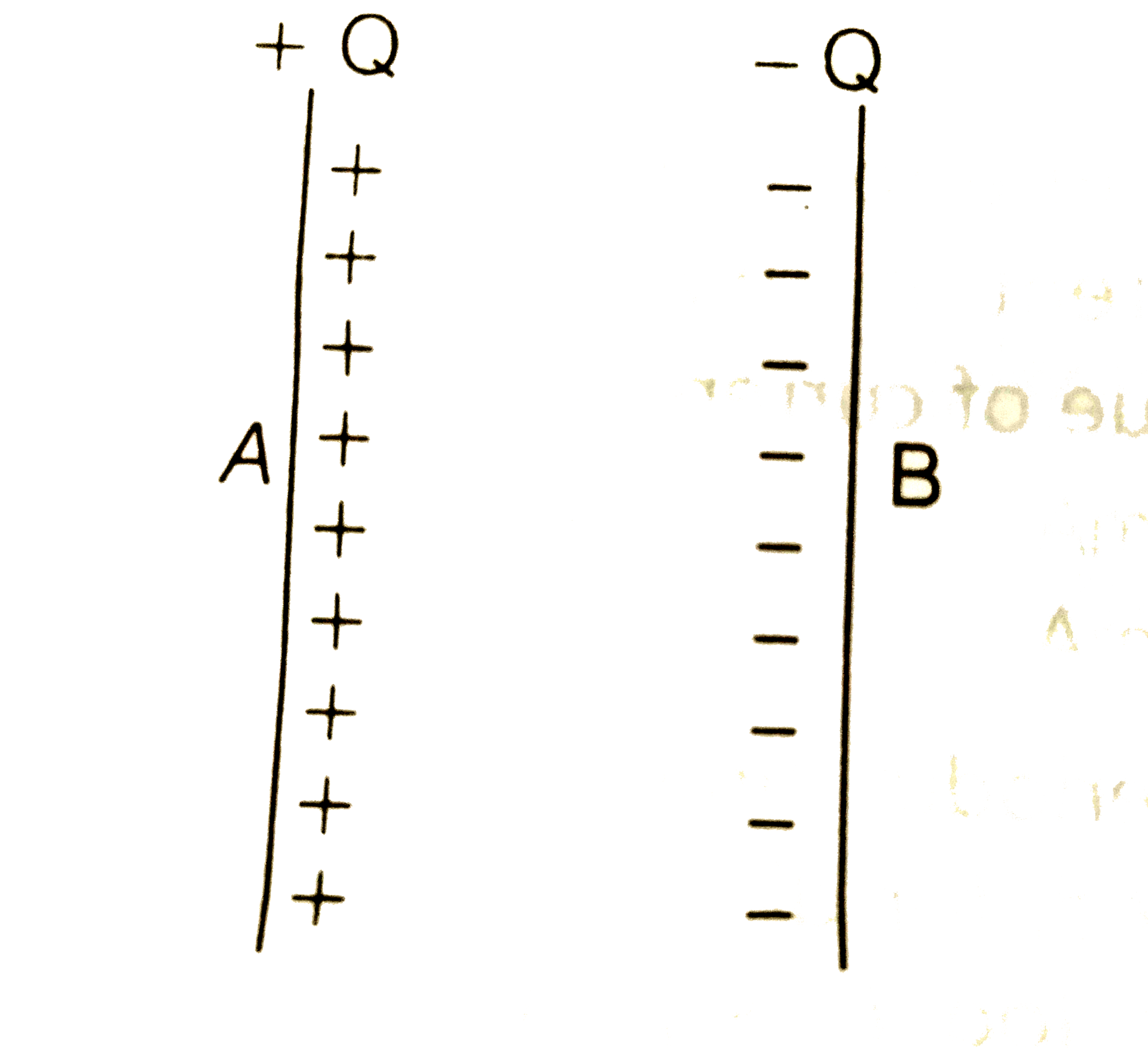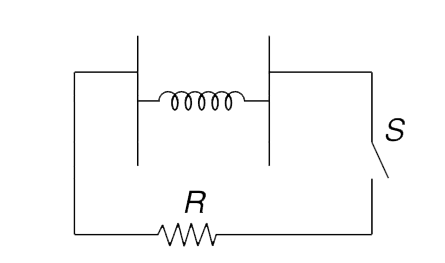Plate A of parallel plate air filled capacitor is connected to a spring having force constant k and plate B is fixed. They are held on a frictionless table top as shown in Fig. If charge +q is placed on plate A and a charge −q on plate A and a charge −q on plate B, by how much does the spring expand ?

In a capacitor, plates carry equal and opposite charges. Therefore, there is a force of attraction between the plates.
In a parallel plate capacitor, energy stored,
U=12q2CandC=∈0Ax
∴U=q2x2∈0A
As the electric field is conservation, therefore,
As the electric field is conservative , therefore,
F=−dUdx=−ddx(q2x2∈0A)=−q22∈0A
Negative sign imples that force is attractive. If k is force constant of the spring and it expands through a distance x, then −F=kx
or x=−Fk=q22∈0Ak
Similar Questions
Knowledge Check
- Question 1 - Select One
A parallel plate capacitor is charged. If the plates are pulled apart
Athe potential difference increasesBthe capacitance increasesCthe total charge increasesDthe charge and the potential difference remain the same - Question 2 - Select One
In a parallel plate capacitor with plate area A and charge Q, the force on one plate because of the charge on the other is equal to
AQ2ε0A2BQ22ε0A2CQ2ε0ADQ22ε0A - Question 3 - Select One
A parallel plate capacitor C has a charge Q. The actual charges on its plates are
AQ,QBQ/2, Q/2CQ,-QDQ/2. - Q/2
The force between the plates of a parrallel plate air capacitor , if charge on capacitor is Q and area of each palte is A , will be
 View Solution
View SolutionA parallel plate capacitor has its two plates connected to an ideal spring of force constant K. Relaxed length of spring is L and it is made of non conducting material. The area of each plate is A. The capacitor has a charge q0 on it. To discharge the capacitor through the resistance R, switch S is closed.
If the time constant of the circuit is very large and discharge process is very slow, how much heat will be dissipated in the resistance? Assume that there is no friction and the plates always remains parallel to each other.
 View Solution
View SolutionA parallel plate capacitor is charged and then isolated. On increasing the plate separation
View SolutionFive identical plates are connected across a battery as follows : If the charge on plate 1 be +q, then the charges on the plates 2,3,4 and 5 are
 View Solution
View SolutionA parallel -plate capacitor is connected to a battery that maintains a constant potential difference V between the plates. If the plates are pulled away from each other, increasing their separation, does the magnitude of the charge on the plates (a) increase, (b) decrease, or (c ) remain the same ?
View Solution

